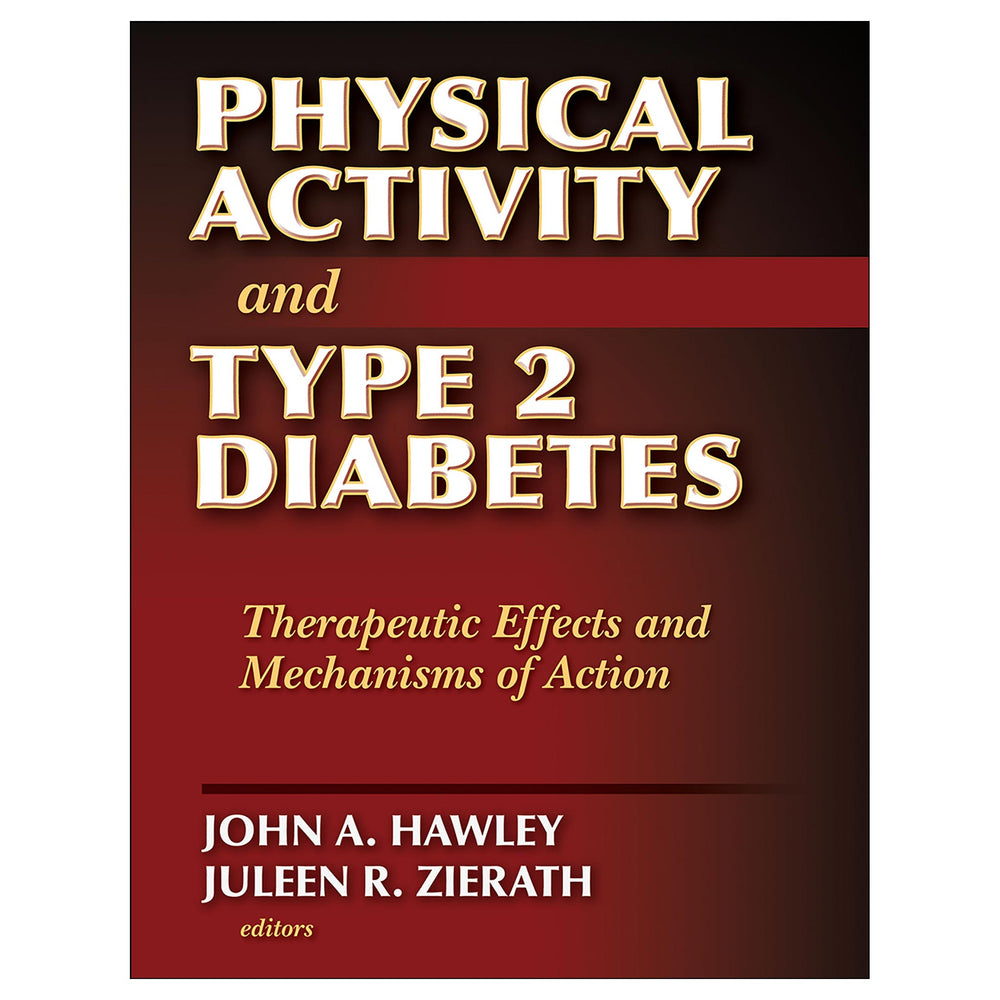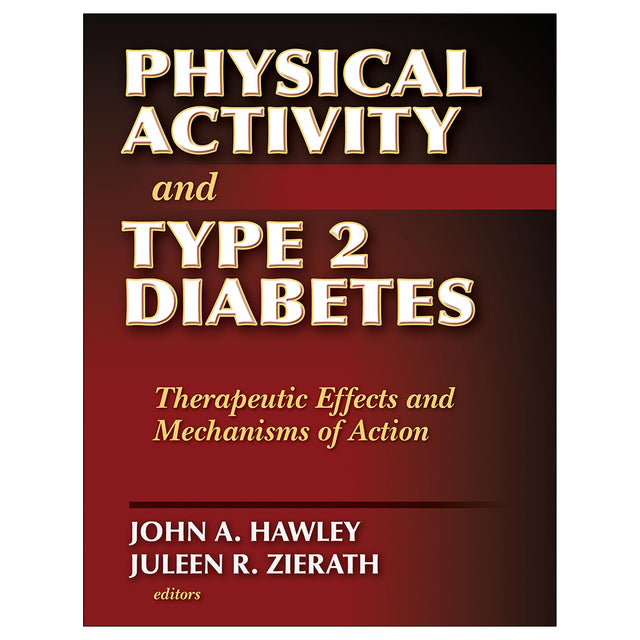Physical Activity and Type 2 Diabetes PDF
Therapeutic Effects and Mechanisms of Action
Author: John A. Hawley, Juleen R. Zierath
$75.00 USD
Access Duration: 10 Years
Over the past 50 years, there has been a dramatic increase in the prevalence of interrelated metabolic disease states, including obesity, insulin resistance, and type 2 diabetes mellitus. In modern Western nations, the population-based prevalence of insulin resistance is approaching 20%, and type 2 diabetes is now the most common endocrine disorder in adults. No longer a disease reserved for the aging population, type 2 diabetes is also on the rise in adolescents. Approximately 30% of all newly diagnosed cases (between 1982 and 1994 in the United States alone) are among people 10 to 19 years of age.
For those engaged in a struggle against this modern-day epidemic, Physical Activity and Type 2 Diabetes provides cutting-edge research to energize current efforts in diabetes prevention, management, and treatment. The most in-depth and up-to-date book on the topic, Physical Activity and Type 2 Diabetes presents a series of independent but related chapters authored by the foremost researchers of insulin resistance examining topics such as these:
• Physical inactivity as a primary cause for the rising incidence of insulin resistance
• The emergence of an “exercise-deficient” phenotype
• The effects of exercise training on selected aspects of substrate metabolism
• The role of endurance and resistance training programs for the prevention and treatment of insulin resistance
• The identification of new molecular targets and pathways useful for the treatment of insulin resistance and type 2 diabetes.
Physical Activity and Type 2 Diabetes provides a four-part, in-depth examination of the relational nature of diabetes and physical activity. Part I begins with a description of the scope and extent of the “diabesity” epidemic. The risk factors for diabetes, the underlying causes of the epidemic, and its potential consequences are outlined as well as the role of physical inactivity in the pathogenesis of diabetes and plans for preventive exercise biology.
Part II continues with an examination of some of the major defects of substrate metabolism in individuals with insulin resistance, while in part III the authors discuss the impact of exercise interventions in the prevention, management, and treatment of type 2 diabetes. Part IV presents recent developments in molecular and cellular biology that may provide treatment therapies for the prevention of type 2 diabetes.
Based on extensive research, Physical Activity and Type 2 Diabetes presents a wealth of information to assist the biomedical and research community in creating prescriptive therapeutic tools for type 2 diabetes intervention—and offers hope for the alleviation of the global epidemic of insulin resistance.
Part I: Aetiology of Insulin Resistance and Type 2 Diabetes: Prevalence and Consequences of the “Diabesity” Epidemic
Chapter 1: The Increasing Burden of Type 2 Diabetes: Magnitude, Causes, and Implications of the Epidemic
Edward W. Gregg, PhD, and Andrea K. Kriska, PhD
Chapter 2: Waging War on Type 2 Diabetes: Primary Prevention Through Exercise Biology
Frank W. Booth, Manu V. Chakravarthy, and Matthew J. Laye
Part II: Defects in Metabolism and Insulin Resistance
Chapter 3: Fatty Acid Uptake and Insulin Resistance
Arend Bonen, Adrian Chabowski, Jan F.C. Glatz, and Joost J.F.P. Luiken
Chapter 4: Lipid Metabolism and Insulin Signaling
Jason R. Berggren, Leslie A. Consitt, and Joseph A. Houmard
Chapter 5: Metabolic Inflexibility and Insulin Resistance
Bret Goodpaster, PhD, and David E. Kelley, MD
Chapter 6: Nutrient Sensor Links Obesity With Diabetes Risk
Sarah Crunkhorn and Mary Elizabeth Patti
Chapter 7: Inflammation-Induced Insulin Resistance in Obesity: When Immunity Affects Metabolic Control
Phillip James White and André Marette
Part III: Prevention of Type 2 Diabetes Through Exercise Training
Chapter 8: Transcription Factors Regulating Exercise Adaptation
David Kitz Krämer and Anna Krook
Chapter 9: Exercise and Calorie Restriction Use Different Mechanisms to Improve Insulin Sensitivity
Gregory D. Cartee, PhD
Chapter 10: Mitochondrial Oxidative Capacity and Insulin Resistance
Kevin R. Short
Chapter 11: Effects of Acute Exercise and Exercise Training on Insulin Action in Skeletal Muscle
Erik A. Richter and Jørgen F.P. Wojtaszewski
Chapter 12: Resistance Exercise Training and the Management of Diabetes
Jørgen F.P Wojtaszewski, Henriette Pilegaard, and Flemming Dela
Part IV: Prevention of Type 2 Diabetes: Identification of Novel Molecular Targets and Pathways
Chapter 13: AMPK: The Master Switch for Type 2 Diabetes?
W.W. Winder and D.M Thomson
Chapter 14: Protein Kinase C and Insulin Resistance
Carsten Schmitz-Peiffer
Chapter 15: Evidence for the Prescription of Exercise as a Therapy for the Treatment of Patients With Type 2 Diabetes
Sarah J. Lessard and John A. Hawley
“In all, this volume offers a valuable update on factors underlying the benefits of exercise in the prevention and treatment of type 2 diabetes.”
-Applied Physiology, Nutrition, and Metabolism





